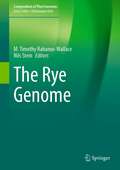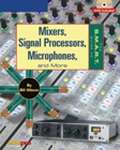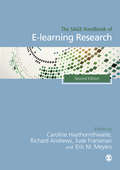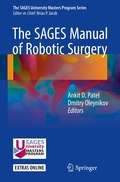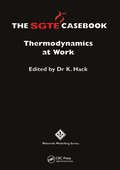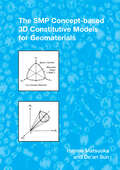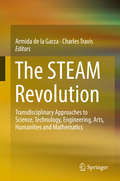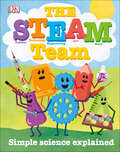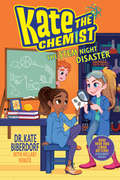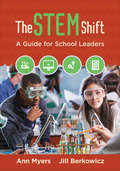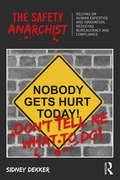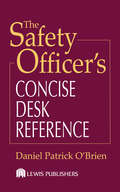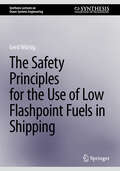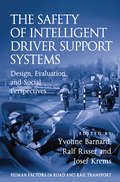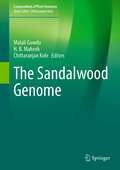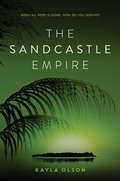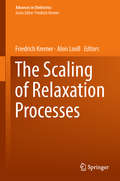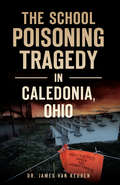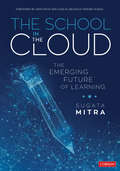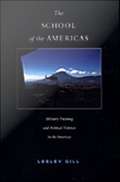- Table View
- List View
The Rye Genome (Compendium of Plant Genomes)
by Nils Stein M. Timothy Rabanus-WallaceThis book celebrates the dawn of the rye genomics era with concise, comprehensive, and accessible reviews on the current state of rye genomic research, written by experts in the field for students, researchers and growers. To most, rye is the key ingredient in a flavoursome bread or their favourite American whisky. To a farmer, rye is the remarkable grain that tolerates the harshest winters and the most unforgiving soils, befitting its legacy as the life-giving seed that fed the ancient civilisations of northern Eurasia. Since the mid-1900s, scientists have employed genetic approaches to better understand and utilize rye, but only since the technological advances of the mid-2010s has the possibility of addressing questions using rye genome assemblies become a reality. Alongside the secret of its unique survival abilities, rye genomics has accelerated research on a host of intriguing topics such as the complex history of rye’s domestication by humans, the nature of genes that switch fertility on and off, the function and origin of accessory chromosomes, and the evolution of selfish DNA.
The S. M. A. R. T. Guide to Mixers, Signal Processors, Microphones, and More
by Bill A. GibsonAdvances in audio industry technology have opened up tremendous, new creative options. Musicians can now bend, shape, mold, stretch, tune, distort, and restore with an ease only imagined 10 or 15 years ago. Today, if you can imagine it, you can create it. The S. M. A. R. T. Guide to Mixers, Signal Processors, Microphones, and More covers the essential ingredients in audio recording -- core equipment, the building blocks of the entire technical and creative aspects of audio recording -- and includes an impressive DVD with more than 100 video and audio demonstrations that enhance and clarify the concepts in the book. You will cover specific techniques designed to improve the overall quality of your audio recordings, enabling them to viably compete with the music on your favorite professional recordings. Study recording examples that fit real musical situations, and learn solutions to common problems that will help you enhance your music. Put each new principle and concept into practice, combine it with your own creativity and imagination, and start cranking out the hits!
The SAGE Handbook of E-learning Research
by Eric M. Meyers Jude Fransman Professor Caroline Haythornthwaite Mr Richard N. L. AndrewsThe new edition of The SAGE Handbook of E-Learning Research retains the original effort of the first edition by focusing on research while capturing the leading edge of e-learning development and practice. Chapters focus on areas of development in e-learning technology, theory, practice, pedagogy and method of analysis. Covering the full extent of e-learning can be a challenge as developments and new features appear daily. The editors of this book meet this challenge by including contributions from leading researchers in areas that have gained a sufficient critical mass to provide reliable results and practices. The 25 chapters are organised into six key areas: 1. THEORY 2. LITERACY & LEARNING 3. METHODS & PERSPECTIVES 4. PEDAGOGY & PRACTICE 5. BEYOND THE CLASSROOM 6. FUTURES
The SAGE Handbook of E-learning Research, 2e
by Eric M. Meyers Richard Andrews Jude Fransman Professor Caroline HaythornthwaiteThe new edition of The SAGE Handbook of E-Learning Research retains the original effort of the first edition by focusing on research while capturing the leading edge of e-learning development and practice. Chapters focus on areas of development in e-learning technology, theory, practice, pedagogy and method of analysis. Covering the full extent of e-learning can be a challenge as developments and new features appear daily. The editors of this book meet this challenge by including contributions from leading researchers in areas that have gained a sufficient critical mass to provide reliable results and practices. The 25 chapters are organised into six key areas: 1. THEORY 2. LITERACY & LEARNING 3. METHODS & PERSPECTIVES 4. PEDAGOGY & PRACTICE 5. BEYOND THE CLASSROOM 6. FUTURES
The SAGES Manual of Robotic Surgery
by Ankit D. Patel Dmitry OleynikovThe SAGES Manual of Robotic Surgery is designed to present a comprehensive approach to various applications of surgical techniques and procedures currently performed with the robotic surgical platform. The Manual also aligns with the new SAGES UNIVERSITY MASTERS Program. The Manual supplements the Robotic Surgery Pathway from Competency to Proficiency to Mastery. Whether it's for Biliary, Hernia, Colon, Foregut or Bariatric, the key technical steps for the anchoring robotic procedures are highlighted in detail as well as what the reader needs to know to successfully submit a video clip to the SAGES Facebook Channels for technical feedback. Readers will also learn about how to count credits for Robotic from the other Master Program Series, Guidelines, Top 21 Videos, Pearls, FLS, FES, FUSE, SMART and Annual SAGES Meeting. The Masters Program promotes lifelong deliberate learning. The initial chapters are dedicated to the anchoring procedures needed to successfully navigate through the Masters Program. Subsequent chapters then address preliminary issues faced by surgeons and staff, such as training and credentialing, as well as instrumentation and platforms commonly used for these procedures. Individual chapters will then focus on specific disease processes and the robotic applications for those procedures. Written by unbiased experts in that field, each of these chapters address issues such as patient selection, pre-operative considerations, positioning and technical aspects of the most common operations, and avoiding complications. A brief review of the existing literature addressing the topics are also included in each section.
The SGTE Casebook: Thermodynamics at Work
by K. HackThe Scientific Group Thermodata Europe (SGTE) is a consortium involved in the development and application of thermodynamic databanks for materials such as metals. Building on SGTE research, the second edition of this standard reference presents thermodynamic calculations as the basic tools in developing and optimizing various materials and processes. The SGTE Casebook: Thermodynamics at Work, Second Edition shows how this data can optimize the production and quality of steel and other alloys. The book explores phases stable at equilibrium as well as their amounts and compositions, and provides information about the degree of instability of the phases not present at equilibrium
The SMP Concept-Based 3D Constitutive Models for Geomaterials
by Hajime MatsuokaThe Cam-Clay model is a fundamental constitutive model in soil mechanics, but is only suitable for normally consolidated clay under triaxial compression stress states. This book introduces the SMP criterion, its integration with the well-known Cam-clay model, and its application to the general eleastoplastic constitutive models for geomaterials like clay, sand and unsaturated soil.
The STEAM Revolution: Transdisciplinary Approaches to Science, Technology, Engineering, Arts, Humanities and Mathematics
by Charles Travis Armida de la GarzaThis volume is dedicated to collaborative research across STEM disciplines, the arts and humanities. It includes six sections, framed from a global perspective and exhibits contributions from key experts in the field, emerging scholarly voices, and STEAM practitioners. The added value of STEAM projects in research is highlighted in the first section of this book. Ranging from the spatial, medical and environmental humanities to heritage science, this section discusses the course and paths STEAM projects may evolve to in the near future. The second section features reflective essays by scientists and artists on the development of their research, their professional growth and personal learning experiences that the art/science collaborations have afforded their work and careers. Sections III and IV provides practical guidance and advice on facilitating STEAM teams and describe successful collaborative projects. By presenting the objectives and outcomes of relevant research, the chapters in these sections discuss the various steps taken by different teams to achieve project fruition. Paying particular attention to barriers inhibiting STEAM collaboration, these sections also explore the ways in which research teams were able to work effectively. The fifth section presents a review of policy issues and the potential impacts of STEAM research for administrators, funders and policy makers. In its pursuit for balance and inclusion, the volume concludes with a critical reflection on STEAM that argues a different perspective and will prove food for thought to readers.
The STEAM Team: Simple Science Explained
by Lisa BurkeThe zany characters of The STEAM Team will guide kids through this engaging, fact packed kid's book all about the key subjects - science, technology, engineering, art, and math.An excellent introduction for children ages 5-7 to understanding these concepts, The STEAM Team is a colorful, well-presented education book for children that will get your little ones crazy for STEAM subjects!This brightly illustrated science book for kids breaks down STEAM subjects and complicated ideas into fun and easily understandable pieces. Join The STEAM Team to unravel the mysteries of science for kids - find out how robots work, what a food chain is, where lightning comes from, and much more!The STEAM Team characters (Science, Technology, Engineering, Art, and Math) guide the reader through the book and are always on hand with tips, fun facts, and simple explanations. The ingeniousness of The STEAM Team is the characters - keeping little ones engaged and engrossed throughout. In these pages the Team cover living things, the human body, space, physics, geography, math, engineering, and chemistry. This book is a fantastic first children's book for kids starting to learn STEAM subjects in school, or who are developing an insatiable interest in the world around them.Meet The Steam Team!The STEAM Team is made up of five cool characters (subjects) that work together to show you how the world works. Science is all about asking questions and discovering the answers to explain how things work. Technology uses science to create new machines and effective ways of doing things. Engineering is all about finding and designing solutions to problems - using science, technology, and math. Art is all about using your imagination and style to create brilliant new things. Math is about numbers, patterns, and problem solving. They are the perfect team to teach you all about STEAM - Science, Technology, Engineering, Art, and Math!Find out what science is, why it is so important, and how it relates to the world around you. Discover how machines work, what a food web is, why boats float, where lightning comes from, and much much more!From Amphibians to Darwin to the Internet, this book is full of interesting STEAM facts covering: - The Universe- Plants- Robots- The human body- Measuring- Climate Change- And so much more!If you are looking to add more books to your collection that answer the questions about the world, give Ask A Scientist a try for the little "why?" askers in your life.
The STEM Night Disaster (Kate the Chemist)
by Kate BiberdorfThe third installment of the Kate the Chemist series that shows kids that everyone can be a scientist!Kate's school is having their first-ever STEM Night and the prizes are incredible! Kate is determined to win and comes up with the perfect experiment. But as she and her best friend, Birdie, start preparing, they find that Kate's project keeps getting messed up. Will Kate be able to use her science know-how to find out who is behind the STEM night sabotage? And will she fix her project before it's too late?Praise for Kate the Chemist: Dragons vs. Unicorns:"Proves that science and fun go together like molecules in a polymer."--School Library Journal"It's a great introduction to the basics of Chemistry that is readily accessible to a variety of ages . . . . The way the everyday chemistry is blended in is done seamlessly, and has [me and my ten-year-old son] noticing how we are all doing a little bit of science everyday." --GeekMom.com
The STEM Shift: A Guide for School Leaders
by Ann P. Myers Jill BerkowiczAll you need to make the shift to STEM a reality! Now more than ever, educational leaders are encouraged to implement STEM as the foundation for preparing students with the 21st century skills required for college and career readiness. This resource makes the process of shifting to a comprehensive, integrated STEM school or district within reach! Invaluable case studies featuring current STEM pioneers from across the country model how successful, STEM-centered learning takes place. You’ll find process-specific best practices and strategies to help you: Understand, create, and lead the STEM change process Transform existing school programs Prepare the school community for STEM and plan for STEM integration Integrate 21st Century Skills, the arts, and humanities Create essential partnerships with business and higher education Includes step-by-step checklists and visual mapping guides for successfully navigating the STEM change process. Use this groundbreaking resource to systematically implement coherent and integrated STEM instruction that transforms learning and prepares students for the global economy! Video and web content also available at http://bit.ly/TheSTEMShift. "Finally! A great book that clearly explains what STEM education is, why we need it, and how to do it well. A must-read for all educators, parents, and policymakers." Tony Wagner, author of The Global Achievement Gap and Creating Innovators "Reading Jill and Ann′s column in Education Week has been a critical part of my weekly reading since they′ve begun writing it. I′ve learned a lot from those short snippets, and now it′s exciting to see their expanded thoughts in The Stem Shift. You can′t go wrong by reading anything they write!" Larry Ferlazzo, High school teacher and Ed Week columnist
The STEM Shift: A Guide for School Leaders
by Ann P. Myers Jill BerkowiczAll you need to make the shift to STEM a reality! Now more than ever, educational leaders are encouraged to implement STEM as the foundation for preparing students with the 21st century skills required for college and career readiness. This resource makes the process of shifting to a comprehensive, integrated STEM school or district within reach! Invaluable case studies featuring current STEM pioneers from across the country model how successful, STEM-centered learning takes place. You’ll find process-specific best practices and strategies to help you: Understand, create, and lead the STEM change process Transform existing school programs Prepare the school community for STEM and plan for STEM integration Integrate 21st Century Skills, the arts, and humanities Create essential partnerships with business and higher education Includes step-by-step checklists and visual mapping guides for successfully navigating the STEM change process. Use this groundbreaking resource to systematically implement coherent and integrated STEM instruction that transforms learning and prepares students for the global economy! Video and web content also available at http://bit.ly/TheSTEMShift. "Finally! A great book that clearly explains what STEM education is, why we need it, and how to do it well. A must-read for all educators, parents, and policymakers." Tony Wagner, author of The Global Achievement Gap and Creating Innovators "Reading Jill and Ann′s column in Education Week has been a critical part of my weekly reading since they′ve begun writing it. I′ve learned a lot from those short snippets, and now it′s exciting to see their expanded thoughts in The Stem Shift. You can′t go wrong by reading anything they write!" Larry Ferlazzo, High school teacher and Ed Week columnist
The Safety Anarchist: Relying on human expertise and innovation, reducing bureaucracy and compliance
by Sidney DekkerWork has never been as safe as it seems today. Safety has also never been as bureaucratized as it is today. Over the past two decades, the number of safety rules and statutes has exploded, and organizations themselves are creating ever more internal compliance requirements. At the same time, progress on safety has slowed to a crawl. Many incident- and injury rates have flatlined. Worse, excellent safety performance on low-consequence events tends to increase the risk of fatalities and disasters. Bureaucracy and compliance now seem less about managing the safety of the workers we are responsible for, and more about managing the liability of the people they work for. We make workers do a lot that does nothing to improve their success locally. Paradoxically, such tightening of safety bureaucracy robs us of exactly the source of human insight, creativity and resilience that can tell us how success is actually created, and where the next accident may well happen. It is time for Safety Anarchists: people who trust people more than process, who rely on horizontally coordinating experiences and innovations, who push back against petty rules and coercive compliance, and who help recover the dignity and expertise of human work.
The Safety Officer's Concise Desk Reference
by Daniel Patrick O'BrienAs a safety manager in today's work environment, you wear hats in many different fields. Sometimes you need only a specific formula or drawing to understand the current situation. This resource supplies it. Or maybe you want to know where to find more information on a specific subject. This resource has it. The Safety Officer's Concise Desk Reference gives them the essentials to get through the task immediately before them by providing the information they need to understand the issues and solve their problems effectively. It covers the basics in a user-friendly format with specific references of where and how to obtain additional information on a broad range of subjects, including industrial hygiene, ergonomics, risk management, fire safety, and workers' compensation. With an extensive list of references and a glossary of terms this book supplies a quick and accurate source of essential safety information.
The Safety Principles for the Use of Low Flashpoint Fuels in Shipping (Synthesis Lectures on Ocean Systems Engineering)
by Gerd WürsigTechnical rules like the IGF code are developed by large groups of experts over long periods of time. Explaining the background for the requirements of such rules is not part of the development process. As a result, the reasoning behind the rules is often lost over time, or at least hidden from the end user of the rules. The purpose of this publication is to explain the safety principles behind the rules for unconventional marine fuels. It is the author's hope that an understanding of the safety principles will contribute to the technology-based interpretation of the rules and their further development.
The Safety of Intelligent Driver Support Systems: Design, Evaluation and Social Perspectives (Human Factors in Road and Rail Transport)
by Ralf RisserThe development of new technologies of information and communication will, in the coming years, transform deeply their uses and practices in transport. The current developments in the field of road telematics and driver assistance systems offer a real opportunity to aid mobility and road safety. However, they also raise numerous questions about their effectiveness, possible positive and negative modifications of behaviour or attitudes and about their acceptability by drivers. Problems related to the design and evaluation of intelligent driver support systems (IDSSs) and social perspectives related to their introduction on a large scale may only be fully addressed from a multi-disciplinary point of view. People from different backgrounds, from both engineering and social sciences, should be involved in this development. This book provides such knowledge from both a human and social factors background. The Safety of Intelligent Driver Support Systems serves the training of professionals working within the transport area so that they can use this knowledge in their work. It will be of direct interest to transportation and traffic professionals, engineers, system designers, researchers and specialists working in automotive and related industries, departments of transport, and communication and public bodies related to transport in the automotive industry, public authorities, etc. Also students at Masters and PhD level, performing studies in the road transportation area, will find in this book a rich source of knowledge. Teachers and trainers, both in professional training and academic education, may use the book as a basis for giving a course on the topic addressed.
The Sandalwood Genome (Compendium of Plant Genomes)
by Chittaranjan Kole Malali Gowda H. B. MaheshThis book is the first comprehensive compilation describing the importance of sandalwood in national and international markets, genetic resources, molecular markers, whole genome sequencing, and pathway genes involved in oil biosynthesis, aroma and fragrance. Application of various “omics” approaches in delineating genome architecture and annotation of genes is highlighted. This book comprises 10 chapters covered over 200 pages authored by the researchers involved in sandalwood genomics. The sandalwood, Santalum album is known for its unique fragrance and finest wood available for carving. Also, sandalwood is intertwined with Indian culture and it is the second most valuable and expensive tree in the world.
The Sandcastle Empire
by Kayla OlsonBefore the war, Eden’s life was easy. Then the revolution happened, and everything changed.Now a powerful group called the Wolfpack controls the earth and its resources. And even though Eden has lost everything to them, she refuses to die by their hands. She knows the coordinates to the only neutral ground left in the world, a place called Sanctuary Island, and she is desperate to escape to its shores.Eden finally reaches the island and meets others resistant to the Wolves. But the solace is short-lived when one of Eden’s new friends goes missing. Braving the jungle in search of their lost ally, they quickly discover Sanctuary is filled with lethal traps and an enemy they never expected.This island might be deadlier than the world Eden left behind, but surviving it is the only thing that stands between her and freedom.
The Sanitation Triangle: Socio-Culture, Health and Materials (Global Environmental Studies)
by Taro Yamauchi Seiji Nakao Hidenori HaradaThis open access book deals with global sanitation, where SDG 6.2 sets a target of enabling access to sanitation services for all, but has not yet been achieved in low- and middle-income countries. The transition from the United Nations MDGs to the SDGs requires more consideration based on the socio-cultural aspects of global sanitation. In other words, equitable sanitation for those in vulnerable situations could be based on socio-cultural contexts. Sanitation is a system that comprises not only a latrine but also the works for the treatment and disposal of human waste. Sanitation systems do not function by themselves but have significance only through social management. The process of decision-making also largely depends on socio-cultural conditions, and the importance of sanitation needs to be socially acknowledged. The health benefits of sanitation improvement—among the significant contributions of sanitation—also need to be considered in the socio-cultural milieu. Further, the social-culture itself is affected, and potentially even created, by sanitation. In this context, more progress on the improvement of sanitation requires a more holistic approach across disciplines.In this book, we present the concept of the Sanitation Triangle, which considers the interconnections of health, materials, and socio-culture in sanitation, as a holistic approach, and the case studies based on the Sanitation Triangle by diverse disciplines such as Cultural Anthropology, Development Studies, Health Sciences, Engineering, and Science Communication. By the deep theoretical examinations and inter-dialogues between the different disciplines, this book explores the potentialities of inter-disciplinary studies on global sanitation.
The Scaling of Relaxation Processes (Advances in Dielectrics)
by Friedrich Kremer Alois LoidlThe dielectric properties especially of glassy materials are nowadays explored at widely varying temperatures and pressures without any gap in the spectral range from µHz up to the Infrared, thus covering typically 20 decades or more. This extraordinary span enables to trace the scaling and the mutual interactions of relaxation processes in detail, e.g. the dynamic glass transition and secondary relaxations, but as well far infrared vibrations, like the Boson peak. Additionally the evolution of intra-molecular interactions in the course of the dynamic glass transition is also well explored by (Fourier Transform) Infrared Spectroscopy. This volume within 'Advances in Dielectrics' summarizes this knowledge and discusses it with respect to the existing and often competing theoretical concepts.
The School Food Revolution: Public Food and the Challenge of Sustainable Development
by Kevin Morgan Roberta Sonnino'The School Food Revolution is an important book that deserves success.' Journal of Organic Systems 'A great new book that describes how 'the humble school meal' can be considered as 'a litmus test of... government's political commitment to sustainable development.' Peter Riggs, Director, Forum on Democracy & Trade 'The School Food Revolution should be an inspiration for policy makers and for school heads and school canteen operators.' Tom Vaclavik, President, Organic Retailers Association School food suddenly finds itself at the forefront of contemporary debates about healthy eating, social inclusion, ecological sustainability and local economic development. All around the world it is becoming clear - to experts, parents, educators, practitioners and policy-makers - that the school food service has the potential to deliver multiple dividends that would significantly advance the sustainable development agenda at global, national and local levels. Drawing on new empirical data collected in urban and rural areas of Europe, North America and Africa, this book offers a timely and original contribution to the school food debate by highlighting the potential of creative public procurement - the power of purchase. The book takes a critical look at the alleged benefits of school food reform, such as lower food miles, the creation of markets for local producers and new food education initiatives that empower consumers by nurturing their capacity to eat healthily. To assess the potential of these claims, the book compares a variety of sites involved in the school food revolution - from rural communities committed to the values of 'the local' to global cities such as London, New York and Rome that feed millions of ethnically diverse young people daily. The book also examines the UN's new school feeding programme - the Home Grown Programme - which sees nutritious food as an end in itself as well as a means to meeting the Millennium Development Goals. Overall, the book examines the theory, policy and practice of public food provisioning, offering a comparative perspective on the design and delivery of sustainable school food systems. The cover illustration is by a Roman child. The authors would like to thank the City of Rome (Department for School and Educational Policies) for permission to reproduce it.
The School Poisoning Tragedy in Caledonia, Ohio
by Dr. James KeurenIn the early 1960s, the River Valley Local School District built its middle school, its high school and its athletic fields in the former Marion Engineer Depot. During World War II, the depot had used the land for heavy equipment rehab, military artillery practice, materials storage, burial of construction debris and burning of waste materials and fuels. In 1997, a River Valley High School nurse grew concerned about the high rate of leukemia and other cancers in graduates. Then a stunning news report announcing a 122 percent increase in death rates over thirty years in the Marion area sparked an investigation. Was the land to blame? The question of what may have been known about the contaminates on the school grounds sent shock waves through the community that still linger today.
The School in the Cloud: The Emerging Future of Learning (Corwin Teaching Essentials)
by Sugata MitraThe Science and the Story of the Future of Learning Educators have been trying to harness the "promise" of technology in education for decades, to no avail, but we have learned that children in groups—when given access to the Internet—can learn anything by themselves. In this groundbreaking book, you’ll glimpse the emerging future of learning with technology. It turns out the promise isn’t in the technology itself; it’s in the self-directed learning of the children who use it. In 1999, Sugata Mitra conducted the famous "Hole in the Wall" experiment that inspired three TED Talks and earned him the first million-dollar TED prize for research in 2013. Since then, he has conducted new research around self-organized learning environments (SOLE), building "Schools in the Cloud" all over the world. This new book shares the results of this research and offers • Examples of thriving Schools in the Cloud in unlikely places • Mitra’s predictions on the future of learning • How to design assessments for self-organizing learning • How to build your own School in the Cloud • Clips from the documentary, The School in the Cloud Discover the future of learning by digging deep into Mitra’s thought-provoking experiences, examples, and vision.
The School in the Cloud: The Emerging Future of Learning (Corwin Teaching Essentials)
by Sugata MitraThe Science and the Story of the Future of Learning Educators have been trying to harness the "promise" of technology in education for decades, to no avail, but we have learned that children in groups—when given access to the Internet—can learn anything by themselves. In this groundbreaking book, you’ll glimpse the emerging future of learning with technology. It turns out the promise isn’t in the technology itself; it’s in the self-directed learning of the children who use it. In 1999, Sugata Mitra conducted the famous "Hole in the Wall" experiment that inspired three TED Talks and earned him the first million-dollar TED prize for research in 2013. Since then, he has conducted new research around self-organized learning environments (SOLE), building "Schools in the Cloud" all over the world. This new book shares the results of this research and offers • Examples of thriving Schools in the Cloud in unlikely places • Mitra’s predictions on the future of learning • How to design assessments for self-organizing learning • How to build your own School in the Cloud • Clips from the documentary, The School in the Cloud Discover the future of learning by digging deep into Mitra’s thought-provoking experiences, examples, and vision.
The School of the Americas: Military Training and Political Violence in the Americas
by Lesley GillLocated at Fort Benning in Columbus, Georgia, the School of the Americas (soa) is a U. S. Army center that has trained more than sixty thousand soldiers and police, mostly from Latin America, in counterinsurgency and combat-related skills since it was founded in 1946. So widely documented is the participation of the School's graduates in torture, murder, and political repression throughout Latin America that in 2001 the School officially changed its name to the Western Hemisphere Institute for Security Cooperation. Lesley Gill goes behind the faade and presents a comprehensive portrait of the School of the Americas. Talking to a retired Colombian general accused by international human rights organizations of terrible crimes, sitting in on classes, accompanying soa students and their families to an upscale local mall, listening to coca farmers in Colombia and Bolivia, conversing with anti-soa activists in the cramped office of the School of the Americas Watch--Gill exposes the School's institutionalization of state-sponsored violence, the havoc it has wrought in Latin America, and the strategies used by activists seeking to curtail it. Based on her unprecedented level of access to the School of the Americas, Gill describes the School's mission and training methods and reveals how its students, alumni, and officers perceive themselves in relation to the dirty wars that have raged across Latin America. Assessing the School's role in U. S. empire-building, she shows how Latin America's brightest and most ambitious military officers are indoctrinated into a stark good-versus-evil worldview, seduced by consumer society and the "American dream," and enlisted as proxies in Washington's war against drugs and "subversion. "
